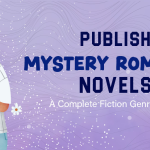Poetic, elaborate, and overly descriptive, purple prose can overwhelm the reader and take away from the narrative’s clarity. This post will explain what purple prose actually is, how to spot it, and why it’s crucial to write in a way that balances elegance and simplicity.
What is Purple Prose?
Writing that is excessively ornate and overflowing with unneeded adjectives, adverbs, and descriptions is referred to as purple prose. It can slow down a story’s pace and frequently divert the reader from the main point of the narrative. Purple writing buries the story beneath needless and complex language, rather than advancing it.
Characteristics of Purple Prose
- Excessive adjectives and adverbs.
- Over-the-top metaphors or similes.
- Long, convoluted sentences.
- Ornate descriptions that overwhelm the story.’
Common Misconceptions
Many people think that writing that is exquisite and descriptive is inherently purple prose. Good prose, however, need not be too flowery to be rich and detailed. What matters is that each word ought to have a meaning.
The Origins of Purple Prose
The phrase “purple prose” has a past. Horace, a Roman poet, coined the term “purple” to characterize writing that was too or superfluous. Because purple has historically been linked to wealth and royalty, it works well to describe writing that is excessively detailed.
Historical Context
Writers of bygone eras, particularly the Victorians, frequently employed flowery language to demonstrate their command of the language. But since clarity and simplicity are the hallmarks of contemporary writing, purple prose is less valued these days.
Examples of Purple Prose
Famous Literary Examples
Some classic literature is guilty of purple prose. A notable example comes from 19th-century writers who tended to wax poetic with their descriptions. For instance, some of Charles Dickens’ works can veer into this territory, though his mastery of storytelling often balanced it out.
Examples from Modern Writing
Modern writers occasionally fall into the purple prose trap, especially when they’re trying to impress with their vocabulary or create dramatic scenes. Think of any overly dramatic romantic scene that uses five adjectives where one would suffice.
How to Identify Purple Prose in Your Writing
Do you ever wonder if your writing is slipping into purple prose territory? Here are a few ways to tell:
Key Signs of Purple Prose
Too Many Descriptive Words: One key sign of purple prose is the overuse of descriptive words. When your writing is filled with unnecessary adjectives and adverbs, it can overwhelm the reader and make the text feel excessive.
While description is important for setting the scene, purple prose occurs when the language becomes overly elaborate, distracting from the story. To avoid this, focus on using precise, impactful words instead of adding too many details that don’t enhance the narrative.
Overuse of Metaphors and Similes: Excessive use of similes and metaphors is one of the main indicators of purple prose. Although these literary conventions might improve descriptions, utilizing them too much can make your writing appear dense, jumbled, and theatrical.
The story loses reader attention and flow when every sentence is jam-packed with pretentious analogies. Make sure your metaphors and similes complement rather than overpower your writing in order to steer clear of purple prose.
Convoluted Sentences: Complex sentence structures are a dead giveaway of purple prose. These statements are hard to read, extremely complicated, and jam-packed with superfluous words. By using flowery language or too many details, they divert the reader’s attention from the main point of the message.
Your writing is probably veering toward purple prose if it is difficult to read or understand due to lengthy, twisted sentences. Writing that is clear and interesting can be maintained by simplifying your sentences.
Why Writers Fall into the Trap of Purple Prose
Many authors feel that the reader is impressed by flowery words. Nevertheless, it usually has the opposite effect. This is the reason why:
Desire to Impress the Reader
The urge to wow the reader is one of the reasons authors use purple prose. Using extremely detailed descriptions or flowery language is a common way that novice or inexperienced authors feel the need to demonstrate their vocabulary or writing abilities.
This may give the writing an overly dramatic tone while detracting from the plot. Beautiful phrases are crucial, but utilizing too many grandiose words might detract from the narrative’s clarity and flow and make readers disinterested.
Desire to Impress the Reader
One reason authors fall into the trap of purple prose is a fear of being overly simplistic. They are concerned that basic writing would appear dull or uninteresting, so they overcompensate by employing flowery language, numerous adjectives, and complex descriptions.
However, this can overwhelm readers and detract from the tale. Instead of adding depth, purple prose frequently impedes clear communication, making it difficult for readers to engage with the story or identify with the characters.
The Dangers of Purple Prose
How It Distracts the Reader
Purple prose can distract the reader by overloading the text with extraneous details, making it difficult to focus on the main subject. Instead of improving the story, it frequently confuses or annoys readers with unnecessarily convoluted terminology.
When the writing becomes overly flowery or elaborate, the plot or characters take a backseat, and the reader loses interest. Writers must avoid purple writing in order to maintain their narratives clear, interesting, and easy to follow.
Impact on Pacing and Clarity
Purple prose can have a negative impact on the pace and clarity of your writing. Overly elaborate or flowery language slows down the plot and makes it difficult for readers to stay focused. Excessive descriptions can cause misunderstanding by obscuring the primary message or action.
When pacing slows, the story seems sluggish, and readers may struggle to understand the scene’s purpose. Keeping your text clean and simple helps to retain pace and ensures that the story flows seamlessly.
How to Avoid Purple Prose
Focus on Clarity and Simplicity
To avoid purple prose, clarity and simplicity are crucial. Purple writing frequently overwhelms readers with its overly sophisticated terminology and grandiose descriptions. Instead, use simple terminology and short words to efficiently communicate your views.
Aim for a concise message that connects with readers without adding superfluous embellishments. Prioritizing clarity ensures that your writing is interesting and approachable, allowing readers to connect with your tale without being lost in flowery terminology. Remember that minimalism improves understanding while keeping purple prose at bay.
Practice Cutting Unnecessary Words
To avoid purple prose, try removing unneeded words from your writing. Purple prose is distinguished by unnecessarily intricate terminology that may confuse readers. Begin by evaluating your sentences and finding any filler words or phrases that do not offer value.
For example, instead of saying “in the vast majority of cases,” use “usually.” This improves your writing’s clarity and engagement. By removing unnecessary words, you can keep your message’s strength without overwhelming your audience with flowery language.
How Purple Prose Can Be Beneficial in Small Doses
When Ornate Writing Works
Purple prose, known for its ornate and lavish terminology, can be useful when used judiciously. It has the ability to create vivid imagery and evoke strong emotions, so increasing the reader’s experience.
Purple prose, for example, can assist construct a vivid picture in descriptive poetry or fantasy sections, bringing readers into the story’s universe. However, excess can distract or overwhelm readers, so it is critical to strike the perfect balance for good storytelling.
Creating Atmosphere and Tone
Creating atmosphere and tone in writing is critical for captivating readers. Purple prose, with its rich and descriptive vocabulary, can aid in building a vivid atmosphere or eliciting powerful emotions. When utilized judiciously, it can improve the mood of a novel and immerse readers into its universe.
Instead of just writing “the sun set,” one could use purple prose to explain how “the golden orb melted into the horizon, painting the sky with hues of orange and pink.” This method, when used correctly, adds depth and flavor to the writing without overpowering the reader.
Examples of Well-Balanced Prose
How to Achieve Rich, Yet Concise Writing
Writers like Ernest Hemingway are known for their ability to convey deep emotions with simple, straightforward prose. His writing proves that you don’t need flowery language to create a powerful story.
Tools and Resources for Improving Writing
Writing Software to Check for Purple Prose
Book Writing tool can help you recognize purple prose, which is unnecessarily elaborate or flowery language that detracts from the core point. Grammarly and Hemingway Editor, for example, assist authors identify unneeded adjectives, adverbs, and convoluted sentences, resulting in clearer and more concise writing.
Using these techniques, writers can improve their work, making it more interesting and accessible to their audience. Simplifying language reduces the dangers of purple prose and improves overall clarity.
Books and Courses for Better Prose
To improve your writing and avoid “purple prose,” look into books and classes that emphasize simple and effective communication. Books such as Strunk and White’s The Elements of Style provide timeless guidance on clarity and brevity.
Online courses, such as Coursera or MasterClass, offer systematic coaching for honing your approach. These materials can help you learn how to explain your thoughts without going overboard, making your prose more engaging and accessible to readers.
Conclusion
In conclusion, while purple prose can bring vivid description and emotion to a story, it should be used sparingly. Striking a balance between detailed details and clear, concise language is critical for keeping readers engaged and strengthening the narrative. By emphasizing clarity, simplicity, and deliberate word choice, authors can avoid the traps of purple writing and produce fascinating stories that engage without overpowering. Ultimately, excellent writing should assist the tale rather than overpower it.















